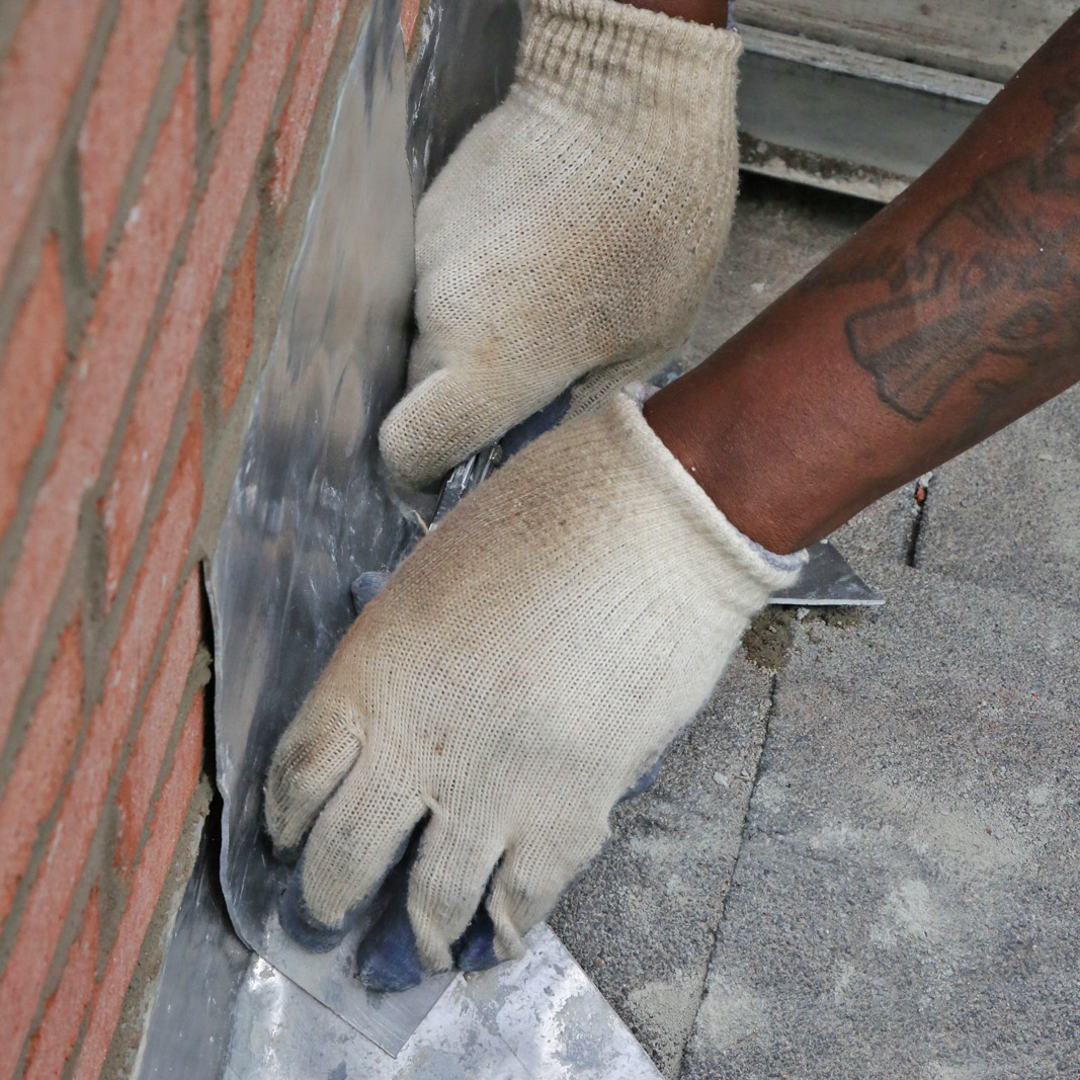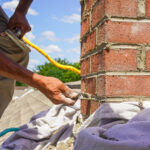Why Flashing is Critical For Your Chimney
Flashing is a chimney component that protects the home from water damage. It’s installed where the chimney meets the roof and creates a waterproof seal to prevent leaks and structural deterioration. It’s easy to forget about the flashing because you have more important things to do, but it’s important to know what can happen if you don’t keep it maintained.
What is Chimney Flashing? 
Flashing is metal pieces — typically aluminum, steel, or copper. It’s installed where the chimney intersects with the roof. The main function of flashing is to prevent water from seeping in between the gap where the chimney and roof meet.
Correctly installed and maintained flashing can last up to 30 years, depending on your climate, the quality of the materials used, and your maintenance routine.
Flashing is made up of three main components:
Base Flashing: This L-shaped section sits under the shingles and extends up against the chimney’s exterior. This forms the foundation for the rest of the flashing system.
Step Flashing: Step flashing is made up of multiple metal pieces layered along the sides of the chimney. It directs water away from the chimney onto the roof. Each piece overlaps the one below it, like stairs.
Counterflashing: This is installed over the step flashing and is embedded into the chimney’s mortar joints or secured to the chimney’s structure. It covers the top of the step flashing as an added barrier against water intrusion.
Why Chimney Flashing is Important
Besides fire, water damage is one of the worst things that can happen to a home. Without effective flashing, water can seep in and cause all sorts of problems, like mold and mildew and structural decay. Here’s why you must ensure your flashing is correct and is well-maintained.
Waterproofing: Flashing makes a watertight barrier that prevents moisture from entering the home. This helps avoid leaks that can damage ceilings, walls, and insulation.
Roof Protection: Directing water away from the chimney’s base protects the roofing materials from water accumulation, which can lead to rot and an early roof replacement.
Chimney Preservation: Water is the number one enemy of your chimney. Persistent leaks and continuous exposure to rain, snow, and ice can erode bricks and mortar joints. If left unchecked, this can dramatically shorten your chimney’s lifespan.
Energy Efficiency: A well-sealed chimney reduces drafts and energy loss. This can reduce your utility bills.
Identifying Damaged Flashing
Owning a home and keeping it in good condition means being constantly vigilant about fixing problems as soon as possible. Here are some red flags that your flashing needs some TLC.
Water Stains on Ceilings or Walls: One of the easiest ways to identify trouble with the flashing is if you see water stains on ceilings or walls, especially near the fireplace or chimney.
Rust in the Firebox: Rust in the firebox almost always means water leaks and damaged flashing could be the culprit.
Visible Gaps: Watch for gaps where the flashing has pulled away from the chimney or roof because it creates an easy way for water to get in.
Mold or Musty Odors: Mold thrives in damp environments. If your home, or area around the fireplace, smells musty, it could be leak from damaged flashing.
 Addressing Damaged Flashing
Addressing Damaged Flashing
If your home has a chimney that gets regular usage, you should schedule an annual inspection and cleaning. Barring this, if you notice that the flashing is damaged, here’s what you can do.
Consult a Professional: Call a professional chimney sweep or roofer to give the flashing the once over to assess the damage and recommend the best way to get it back into shape.
Temporary Measures: If the contractor can’t get to you immediately, apply roofing cement to minor gaps as a short-term fix. Remember, this isn’t a permanent solution!
Regular Maintenance: Once the flashing is fixed, it’s important to schedule regular maintenance by certified professionals to ensure the flashing — and your chimney — stay in good shape.
Has Your Flashing Seen Better Days?
Call Chimney Solutions in Chattanooga, TN. Our customers trust us to keep their chimneys and fireplaces in tip-top shape all year long. We have over 20 years of experience and can help with flashing problems, chimney sweeping, inspection, repairs, and more. Contact us today for an appointment!




